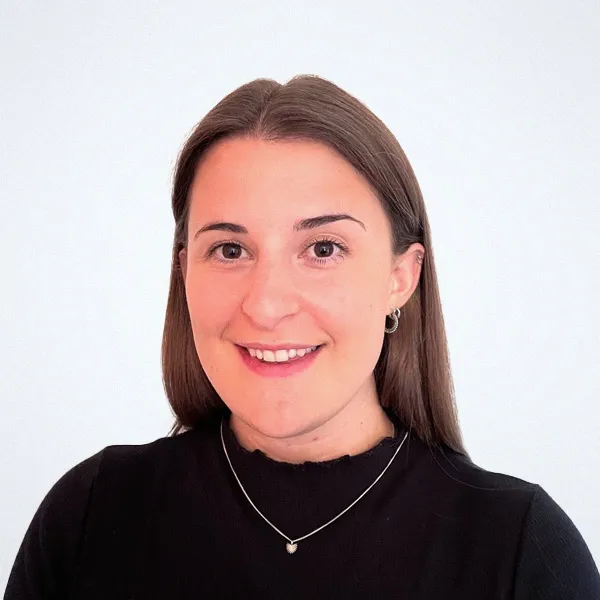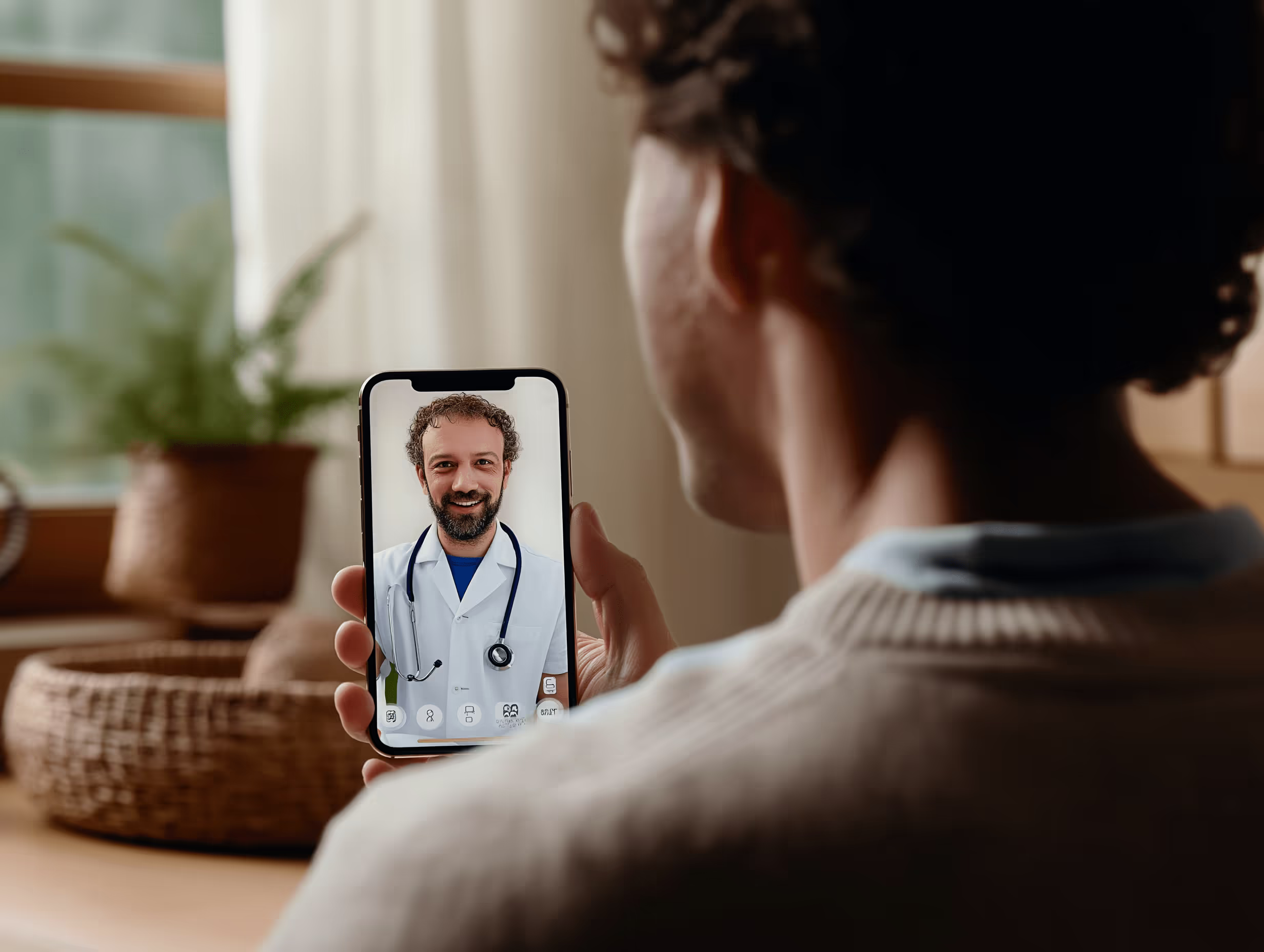Extended NIPT goes beyond trisomies 21/18/13 to include additional chromosomes, key microdeletions, and selected single-gene syndromes - especially useful in increased NT, where many causes lie beyond the basic panel.

Chat with our Genetic Counsellor, receive your at-home DNA kit with a quick cheek swab, send it back, and get your results in under 4 weeks.

Increased NT (iNT) is strongly associated with de novo chromosomal and monogenic conditions, so the best NIPT for iNT must cover both - aneuploidies/CNVs and key single-gene syndromes. Many so-called extended panels add little beyond the basic trisomies; in iNT their yield is often similar to basic NIPT.
Much of the confusion comes from marketing labels (“complete”, “plus”, “premium”, “extended”) and the misused term “genome-wide (GW) NIPT”, which does not read the genome or test individual genes - it samples cfDNA at shallow depth to flag large chromosomal imbalances.
Because most “extended” NIPTs add only sex-chromosome aneuploidies and a few microdeletions, their utility in iNT is limited: the only consistently iNT-associated conditions they capture are monosomy X (45,X) and 22q11.2 deletion.
We have reviewed current options and identified a small subset of genuinely fit-for-purpose NIPT panels for the high-NT scenario.








We offer expert advice and testing for a range of genes that may increase your risk of developing certain types of cancer.
View Full Gene List
Explore NIPTs and compare the conditions they screen for, plus their sensitivity, specificity, PPV, and NPV.*
| Condition | Prelavence |
PrenatalSafe Complete Plus
|
PrenatalSafe 3UK
|
KNOVA
|
Unity Aneuploidies
|
Unity Complete
|
Panorama AI
|
Panorama Microdeletions
|
|||||||||||||||||||||
|---|---|---|---|---|---|---|---|---|---|---|---|---|---|---|---|---|---|---|---|---|---|---|---|---|---|---|---|---|---|
| Sens | Spec | PPV | NPV | Sens | Spec | PPV | NPV | Sens | Spec | PPV | NPV | Sens | Spec | PPV | NPV | Sens | Spec | PPV | NPV | Sens | Spec | PPV | NPV | Sens | Spec | PPV | NPV | ||
| Autosomal Aneuploidies | |||||||||||||||||||||||||||||
| Trisomy 21 (Down Syndrome) | 1:700 | 99.54% | 100% | 90.9% | >99.99% | 99.54% | 100% | - | - | 97.8% | 99.4% | 93.7% | 99.8% | 99.7% | 99.7% | 90.5% | >99.9% | 99.7% | 99.7% | 90.5% | >99.9% | 99.0% | >99% | 95% | >99.99% | 99.0% | >99% | 95% | >99.99% |
| Trisomy 18 (Edwards Syndrome) | 1:5,000 | 100% | 100% | 97.6% | >99.99% | 100% | 100% | - | - | 97.8% | 99.4% | 93.7% | 99.8% | 99.5% | >99.9% | 97.6% | >99.9% | 99.5% | >99.9% | 97.6% | >99.9% | 94.1% | >99% | 91% | >99.99% | 94.1% | >99% | 91% | >99.99% |
| Trisomy 13 (Patau Syndrome) | 1:16,000 | 100% | 99.99% | 73.3% | >99.99% | 100% | 99.99% | - | - | 97.8% | 99.4% | 93.7% | 99.8% | >99.9% | >99.9% | 73.3% | >99.9% | >99.9% | >99.9% | 73.3% | >99.9% | >99% | >99% | 68% | >99.99% | >99% | >99% | 68% | >99.99% |
| Trisomy 15 | 1:100,000,000 | - | - | - | - | - | - | - | - | 97.8% | 99.4% | 93.7% | 99.8% | - | - | - | - | - | - | - | - | - | - | - | - | - | - | - | - |
| Trisomy 16 | 1:50,000 | - | - | - | - | - | - | - | - | 97.8% | 99.4% | 93.7% | 99.8% | - | - | - | - | - | - | - | - | - | - | - | - | - | - | - | - |
| Trisomy 22 | 1:50,000 | - | - | - | - | - | - | - | - | 97.8% | 99.4% | 93.7% | 99.8% | - | - | - | - | - | - | - | - | - | - | - | - | - | - | - | - |
| Sex Chromosome Aneuploidies | |||||||||||||||||||||||||||||
| Turner Syndrome (45,X) | 1:2,500 | 98.11% | 99.98% | 80% | 100% | - | - | - | - | 97.8% | 99.4% | 93.7% | 99.8% | 97.3% | 99.9% | 42% | >99.9% | 97.3% | 99.9% | 42% | >99.9% | >99% | >99% | 7.5% | >99.99% | >99% | >99% | 7.5% | >99.99% |
| Klinefelter Syndrome (47,XXY) | 1:650 | 100% | 100% | 100% | 100% | - | - | - | - | 97.8% | 99.4% | 93.7% | 99.8% | N/a | N/a | N/a | N/a | N/a | N/a | N/a | N/a | >99% | >99% | 7.5% | >99.99% | >99% | >99% | 7.5% | >99.99% |
| Triple X Syndrome (47,XXX) | 1:1,000 | 100% | 99.99% | 94.44% | 100% | - | - | - | - | 97.8% | 99.4% | 93.7% | 99.8% | N/a | N/a | N/a | N/a | N/a | N/a | N/a | N/a | >99% | >99% | 7.5% | >99.99% | >99% | >99% | 7.5% | >99.99% |
| Jacob's Syndrome (47,XYY) | 1:1,000 | 100% | 99.99% | 96.30% | 100% | - | - | - | - | 97.8% | 99.4% | 93.7% | 99.8% | N/a | N/a | N/a | N/a | N/a | N/a | N/a | N/a | >99% | >99% | 7.5% | >99.99% | >99% | >99% | 7.5% | >99.99% |
| Microdeletions | |||||||||||||||||||||||||||||
| DiGeorge Syndrome | 1:4,000 | 83.33% | 99.99% | 71.43% | 100% | - | - | - | - | >99.9% | >99.9% | >99.9% | >99.9% | 97.3% | 99.9% | N/a | N/a | >95% | >99.9% | N/a | N/a | >83.3% | >99% | 53% | >99.99% | 83.3% | >99% | 53% | >99.99% |
| 1p36 deletion syndrome | 1:5,000 | 83.33% | 99.99% | 71.43% | 100% | - | - | - | - | >99.9% | >99.9% | >99.9% | >99.9% | - | - | - | - | - | - | - | - | - | - | - | - | 99.9% | >99% | 7-17% | >99.99% |
| Angelman syndrome | 1:15,000 | 83.33% | 99.99% | 71.43% | 100% | - | - | - | - | >99.9% | >99.9% | >99.9% | >99.9% | - | - | - | - | - | - | - | - | - | - | - | - | 95.5% | >99% | 10% | >99.99% |
| Cri-du-chat syndrome | 1:30,000 | 83.33% | 99.99% | 71.43% | 100% | - | - | - | - | >99.9% | >99.9% | >99.9% | >99.9% | - | - | - | - | - | - | - | - | - | - | - | - | >99% | >99% | 2-5% | >99.99% |
| Prader-Willi syndrome | 1:22,500 | 83.33% | 99.99% | 71.43% | 100% | - | - | - | - | >99.9% | >99.9% | >99.9% | >99.9% | - | - | - | - | - | - | - | - | - | - | - | - | 93.8% | >99% | 5% | >99.99% |
| Wolf-Hirschhorn Syndrome | 1:50,000 | 83.33% | 99.99% | 71.43% | 100% | - | - | - | - | >99.9% | >99.9% | >99.9% | >99.9% | - | - | - | - | - | - | - | - | - | - | - | - | - | - | - | - |
| Jacobsen Syndrome | 1:100,000 | 83.33% | 99.99% | 71.43% | 100% | - | - | - | - | >99.9% | >99.9% | >99.9% | >99.9% | - | - | - | - | - | - | - | - | - | - | - | - | - | - | - | - |
| Langer-Giedion Syndrome | 1:1,000,000 | 83.33% | 99.99% | 71.43% | 100% | - | - | - | - | >99.9% | >99.9% | >99.9% | >99.9% | - | - | - | - | - | - | - | - | - | - | - | - | - | - | - | - |
| Smith-Magenis Syndrome | 1:25,000 | 83.33% | 99.99% | 71.43% | 100% | - | - | - | - | >99.9% | >99.9% | >99.9% | >99.9% | - | - | - | - | - | - | - | - | - | - | - | - | - | - | - | - |
| 9p Deletion Syndrome | 1:>1,000,000 | - | - | - | - | - | - | - | - | >99.9% | >99.9% | >99.9% | >99.9% | - | - | - | - | - | - | - | - | - | - | - | - | - | - | - | - |
| 18p Deletion Syndrome | N/a | - | - | - | - | - | - | - | - | >99.9% | >99.9% | >99.9% | >99.9% | - | - | - | - | - | - | - | - | - | - | - | - | - | - | - | - |
| 18q22q23 Deletion Syndrome | N/a | - | - | - | - | - | - | - | - | >99.9% | >99.9% | >99.9% | >99.9% | - | - | - | - | - | - | - | - | - | - | - | - | - | - | - | - |
| De Novo/Inherited Monogenic Disorders Part 1 | |||||||||||||||||||||||||||||
| Noonan Syndrome | 4-10:10,000 | N/a | N/a | N/a | N/a | - | - | - | - | 95.82% | >99.9% | >99.9% | >99.9% | - | - | - | - | - | - | - | - | - | - | - | - | - | - | - | - |
| Cornelia de Lange Syndrome | 1-10:100,000 | N/a | N/a | N/a | N/a | - | - | - | - | 94.72% | >99.9% | >99.9% | >99.9% | - | - | - | - | - | - | - | - | - | - | - | - | - | - | - | - |
| Osteogenesis Imperfecta | 5-7:100,000 | N/a | N/a | N/a | N/a | - | - | - | - | 94.9% | >99.9% | >99.9% | >99.9% | - | - | - | - | - | - | - | - | - | - | - | - | - | - | - | - |
| Stickler Syndrome | 1:10,000 | N/a | N/a | N/a | N/a | - | - | - | - | 99% | >99.9% | >99.9% | >99.9% | - | - | - | - | - | - | - | - | - | - | - | - | - | - | - | - |
| Rett Syndrome | 4-10:100,000 | N/a | N/a | N/a | N/a | - | - | - | - | 89.5% | >99.9% | >99.9% | >99.9% | - | - | - | - | - | - | - | - | - | - | - | - | - | - | - | - |
| Achondroplasia | 1-2:10,000 | N/a | N/a | N/a | N/a | - | - | - | - | 98.2% | >99.9% | >99.9% | >99.9% | - | - | - | - | - | - | - | - | - | - | - | - | - | - | - | - |
| Crouzon/Pfeiffer Syndrome | 1-9:100,000 | N/a | N/a | N/a | N/a | - | - | - | - | 99% | >99.9% | >99.9% | >99.9% | - | - | - | - | - | - | - | - | - | - | - | - | - | - | - | - |
| Cleidocranial Dysplasia | 1-2:100,000 | N/a | N/a | N/a | N/a | - | - | - | - | 75.5% | >99.9% | >99.9% | >99.9% | - | - | - | - | - | - | - | - | - | - | - | - | - | - | - | - |
| CHARGE Syndrome | 6-12:100,000 | N/a | N/a | N/a | N/a | - | - | - | - | 98% | >99.9% | >99.9% | >99.9% | - | - | - | - | - | - | - | - | - | - | - | - | - | - | - | - |
| Cardiofaciocutaneous Syndrome | 4-10:10,000 | N/a | N/a | N/a | N/a | - | - | - | - | 98% | >99.9% | >99.9% | >99.9% | - | - | - | - | - | - | - | - | - | - | - | - | - | - | - | - |
| Bohring-Opitz Syndrome | <1:1,000,000 | N/a | N/a | N/a | N/a | - | - | - | - | 82% | >99.9% | >99.9% | >99.9% | - | - | - | - | - | - | - | - | - | - | - | - | - | - | - | - |
| Sotos Syndrome | 7-8:100,000 | N/a | N/a | N/a | N/a | - | - | - | - | 43.7% | >99.9% | >99.9% | >99.9% | - | - | - | - | - | - | - | - | - | - | - | - | - | - | - | - |
| De Novo/Inherited Monogenic Disorders Part 2 | |||||||||||||||||||||||||||||
| Alagille Syndrome | 1-3.3:100,000 | N/a | N/a | N/a | N/a | - | - | - | - | - | - | - | - | - | - | - | - | - | - | - | - | - | - | - | - | - | - | - | - |
| Schinzel-Giedion Syndrome | 1:>1,000,000 | N/a | N/a | N/a | N/a | - | - | - | - | - | - | - | - | - | - | - | - | - | - | - | - | - | - | - | - | - | - | - | - |
| Holoprosencephaly | 1:16,000 | N/a | N/a | N/a | N/a | - | - | - | - | - | - | - | - | - | - | - | - | - | - | - | - | - | - | - | - | - | - | - | - |
| Tuberous Sclerosis (TSC1) | 1-2:10,000 | - | - | - | - | - | - | - | - | 94% | >99.9% | >99.9% | >99.9% | - | - | - | - | - | - | - | - | - | - | - | - | - | - | - | - |
| Tuberous Sclerosis (TSC2) | <1:1,000,000 | - | - | - | - | - | - | - | - | 94% | >99.9% | >99.9% | >99.9% | - | - | - | - | - | - | - | - | - | - | - | - | - | - | - | - |
| Craniosynostosis (TWIST1) | 2-4:100,000 | - | - | - | - | - | - | - | - | 50.3% | >99.9% | >99.9% | >99.9% | - | - | - | - | - | - | - | - | - | - | - | - | - | - | - | - |
| Craniosynostosis (EFNB1) | N/a | - | - | - | - | - | - | - | - | 94% | >99.9% | >99.9% | >99.9% | - | - | - | - | - | - | - | - | - | - | - | - | - | - | - | - |
| Craniosynostosis (ERF) | N/a | - | - | - | - | - | - | - | - | 93.6% | >99.9% | >99.9% | >99.9% | - | - | - | - | - | - | - | - | - | - | - | - | - | - | - | - |
| Craniosynostosis (TCF12) | N/a | - | - | - | - | - | - | - | - | 93% | >99.9% | >99.9% | >99.9% | - | - | - | - | - | - | - | - | - | - | - | - | - | - | - | - |
| Kabuki Syndrome | 1:1,900,000 | - | - | - | - | - | - | - | - | 98.3% | >99.9% | >99.9% | >99.9% | - | - | - | - | - | - | - | - | - | - | - | - | - | - | - | - |
| Smith-Lemli-Opitz (CDKL5) | 1:50,000 | - | - | - | - | - | - | - | - | 79% | >99.9% | >99.9% | >99.9% | - | - | - | - | - | - | - | - | - | - | - | - | - | - | - | - |
| Carrier Screening (Mother + Fetal Risk) | |||||||||||||||||||||||||||||
| Cystic Fibrosis | N/a | - | - | - | - | - | - | - | - | - | - | - | - | - | - | - | - | 96% | 95.23% | 50% | 99.79% | - | - | - | - | - | - | - | - |
| Spinal Muscular Atrophy | N/a | - | - | - | - | - | - | - | - | - | - | - | - | - | - | - | - | 96% | 95.23% | 50% | 99.79% | - | - | - | - | - | - | - | - |
| Sickle Cell Disease | N/a | - | - | - | - | - | - | - | - | - | - | - | - | - | - | - | - | 96% | 95.23% | 50% | 99.79% | - | - | - | - | - | - | - | - |
| Alpha-thalassemia | N/a | - | - | - | - | - | - | - | - | - | - | - | - | - | - | - | - | 96% | 95.23% | 50% | 99.79% | - | - | - | - | - | - | - | - |
| Carrier Screening (Mother + Partner Risk) | |||||||||||||||||||||||||||||
| Cystic Fibrosis | - | ✗ | ✗ | ✗ | ✗ | ✓ | ✗ | ✗ | |||||||||||||||||||||
| Spinal Muscular Atrophy | - | ✗ | ✗ | ✗ | ✗ | ✓ | ✗ | ✗ | |||||||||||||||||||||
| Sickle Cell Disease | - | ✗ | ✗ | ✗ | ✗ | ✓ | ✗ | ✗ | |||||||||||||||||||||
| Alpha-thalassemia | - | ✗ | ✗ | ✗ | ✗ | ✓ | ✗ | ✗ | |||||||||||||||||||||
| Fetal Risk Assessment (if mother is carrier) | - | ✗ | ✗ | ✗ | ✗ | ✓ | ✗ | ✗ | |||||||||||||||||||||
| Test Features & Compatibility | |||||||||||||||||||||||||||||
| Triploidy | - | ✗ | ✗ | ✗ | ✗ | ✗ | ✓ | ✗ | |||||||||||||||||||||
| Number of Noonan Syndrome variants | - | 8 | - | 13 | - | - | ✓ | - | |||||||||||||||||||||
| De Novo Genetic Syndromes | - | 25 | - | 52 | - | - | ✓ | - | |||||||||||||||||||||
| Egg Donor Pregnancies | - | ✓ | ✗ | ✗ | ✗ | ✗ | ✓ | ✓ | |||||||||||||||||||||
| Vanishing Twin (after 5 weeks of discovery) | - | ✓ | ✗ | ✗ | ✗ | ✗ | ✓ | ✓ | |||||||||||||||||||||
| Twin Pregnancies | - | ✓ | ✓ | ✗ | ✓ | ✓ | ✓ | ✓ | |||||||||||||||||||||
| Pricing & Turnaround Time | |||||||||||||||||||||||||||||
| Test Price | - | £1,490 | £540 | £990 | £490 | £990 | £590 | £790 | |||||||||||||||||||||
| Turnaround Time (working days) | - | 10-22 | 2-5 | 7-10 | 7-10 | 7-22 | 7-10 | 7-10 | |||||||||||||||||||||
Disclaimer! All statistics mentioned are based on data from the laboratory's Performance and Clinical Validation studies, conducted with pregnant participants. These figures reflect outcomes observed within those specific study groups and may not represent the general population.
Sensitivity and specificity help you understand how reliable a test is. A test with high sensitivity catches more true positives, and one with high specificity avoids false alarms. Together, they help ensure your results are trustworthy.

Not quite. Even highly accurate tests need interpretation. A genetic counsellor helps explain what your result means for you and your family — and whether you need any follow-up or additional screening.

These metrics help determine a test's accuracy. High sensitivity ensures most carriers are identified, while high specificity ensures non-carriers aren't misdiagnosed. Together, they provide a comprehensive view of a test's reliability.

Sensitivity measures how well a test identifies true positives among all who have the condition, while PPV assesses the likelihood that a positive test result is a true positive. Sensitivity is intrinsic to the test, whereas PPV is influenced by the condition's prevalence in the population.

Several things can influence test accuracy — including how common the gene variant is in the population (prevalence), the quality of the lab, and even how the sample was collected. That’s why expert-designed tests and genetic counselling matter.

Test stats like sensitivity or PPV can change based on the population being tested, the condition being looked for, and how the test is used. That’s why context matters — Jeen’s team explains your results in a way that fits your unique case.

Yes. A test designed to catch all potential cases (high sensitivity) might also capture individuals without the condition, leading to false positives and thus lower specificity. Balancing both metrics is crucial for accurate testing.

There is significant misuse of the term “genome-wide (GW) NIPT” in papers, marketing and clinic websites. GW NIPT does not read the whole genome or analyse individual genes. It performs shallow, low-coverage counting of DNA fragments across chromosomes to look for large gains or losses of chromosomal material. Think of it as a broad map scan, not a line-by-line read of the genetic book.
What GW NIPT can screen: the common trisomies (21/18/13), often sex-chromosome changes, and in some labs selected rare autosomal trisomies or large segmental deletions/duplications.
What it cannot do: detect single-gene (monogenic) conditions or most small microdeletions/duplications, nor provide true whole-genome or diagnostic analysis.
Where single-gene (monogenic) NIPT fits: this is a separate, targeted cfDNA approach that screens specific genes/conditions (e.g., some recessive disorders or defined syndromes). Panels and performance vary by lab; many require known parental variants or are limited to a set list of genes. They are still screening tests - any high-chance result needs CVS/amnio for confirmation.
Take-home: call GW NIPT what it is - a chromosome-level cfDNA screen at shallow depth. Use it alongside ultrasound, and don’t confuse it with single-gene NIPT or whole-genome sequencing by diagnostic invasive test.

Our team of experts is here to help. We're just a message away.



